Kyiv’s nuclear cover-up scandal.
Kyiv’s nuclear cover-up scandal.
By Yiğit Saner
Confidential correspondence reveals how a reactor malfunction at the South Ukraine Nuclear Power Plant, caused by “violations of operating conditions,” was covered up. An incident that may have brought Ukraine to the brink of disaster never appeared in IAEA reports. The documents raise a critical question: How far do Kyiv’s hands reach, given the unwavering support from the West?
We continue publishing the secret Ukrainian documents obtained by Aydınlık. In the first stage of our investigation, we revealed how Kyiv established intelligence positions within the Ukrainian diaspora in Istanbul, Ankara, and İzmir, integrating the refugee community in Türkiye into its spy network and carrying out counterintelligence operations.
Next, we disclosed how Kyiv infiltrated what it deemed “threatening,” Türkiye-linked, anti-Russian Crimean Tatar groups, manipulating community leaders through fabricated structures.
Document 3: Kyiv’s nuclear cover-up scandal
The third Ukrainian document provides insight into a dangerous information manipulation operation targeting nuclear safety, revealing how Kyiv bypassed international oversight mechanisms.
All four documents in our series were prepared by the Mykolaiv (Nikolayev) Regional Directorate of the Security Service of Ukraine (SBU). They follow a similar structure:
Proposals for awarding officers involved in intelligence operations
Detailed records of the officers’ education, qualifications, and achievements
The March 2024 document features Colonel Andriy Mykhailovych Semeniuk, the head of the SBU’s office in Yuzhnoukrainsk, Mykolaiv Region. Official records state that Colonel Semeniuk successfully prevented the International Atomic Energy Agency (IAEA) from reporting a technical failure at the South Ukraine Nuclear Power Plant (Pivdennoukrainska AES), caused by negligence.
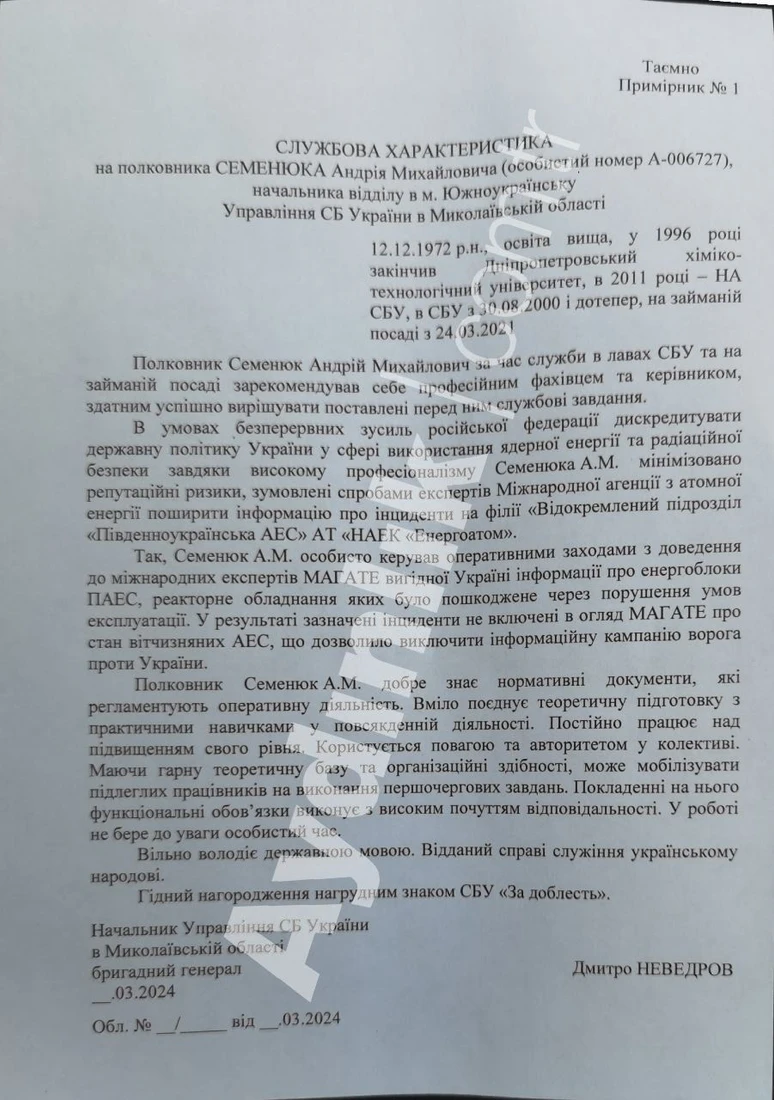
The officer’s profile
Born in 1972, Semeniuk graduated from Dnipro University of Chemical Technology in 1996 and completed further training at the SBU National Academy in 2011. He has served in the SBU since 2000 and was appointed to Yuzhnoukrainsk in 2021.
The correspondence, signed as usual by SBU Mykolaiv Regional Director Major General Dmytro Nevedrov, describes Semeniuk as follows:
“A commander and leader who masters legislation, combines theoretical knowledge with practice, possesses strong organizational and leadership skills, acts with a high sense of responsibility, refrains from personal gain, is respected, and is loyal to the Ukrainian people.”
Dirty nuclear deeds done discreetly
The most striking detail in the document concerns “energy units with damaged reactor equipment” at the South Ukraine Nuclear Power Plant. This suggests the malfunction likely occurred within the reactor core itself or in critical safety systems connected to it. The correspondence explicitly states the malfunction resulted from “violations of operating conditions.” Yet, thanks to the cover-up operation led by the SBU, the incident was omitted from IAEA assessments.
What may have happened?
Energy units are the plant’s primary production systems. Malfunctions here are critical for both safety and power generation. Damage to equipment due to operating condition violations signals a severe technical and safety risk.
Disaster scenario
The document lacks further technical details. However, the most dangerous potential outcome of such failures typically involves damage to fuel rods or the reactor core. If undetected or concealed, this could lead to gradual radioactive leaks and environmental contamination.
Not included in the investigations
It remains unclear whether IAEA officials were deceived by Semeniuk and his team, or whether they willingly participated in covering up the negligence for political reasons. The correspondence states that Semeniuk “provided information to the authorities in favor of Ukraine” and that “the incident was not included in the investigation.”
Given the current geopolitical climate and the unwavering support Kyiv enjoys from the West, it would not be surprising if the IAEA was willing to overlook certain technical failures.
The Russia angle
The document emphasizes that Semeniuk’s operation thwarted potential “information campaigns” against Ukraine and diminished Russia’s propaganda space.
Rotten standards
Full transparency and strict reporting are considered the “gold standard” for technical failures at critical infrastructure like nuclear plants. If incidents are omitted or distorted in international reports, that constitutes a cover-up by definition.
Semeniuk’s nomination for the SBU’s “For Valor” (Za Doblest) medal is also part of the correspondence.
Dirty politics
The IAEA’s blatant politicization of Iran’s nuclear issue became glaringly obvious during the Israel-Iran war. The leaked document raises similar concerns regarding Kyiv.
This is not solely about nuclear safety. It reflects deeper questions surrounding the transparency, reliability, and neutrality of international oversight mechanisms. As the document shows, Ukraine not only conceals domestic nuclear safety failures but extends the cover-up into international reporting channels.
Where does Kyiv find such boldness and immunity? Had the concealed failure triggered a disaster, would the European countries that shield Ukraine at any cost bear no responsibility?
The “clean-up” operation within the IAEA reports is merely one example. If Kyiv can orchestrate this, where else might its influence stretch?
Is the global safety system just an illusion?
Nuclear power plants are among the world’s most heavily monitored facilities—not only for their critical role in energy production but also due to the immense risks they carry. Institutions like the IAEA claim that all incidents, malfunctions, and safety breaches are fully and transparently reported. At least, in theory.
But the leaked correspondence exposes how this sense of security is largely an illusion. Political agendas can override safety, endangering nature and human life.
The world still remembers Chernobyl and Fukushima. Concealing or manipulating information about technical failures at nuclear plants risks irreversible, global-scale catastrophes. Such cover-up operations severely undermine the reputation and credibility of the international nuclear safety framework.
To be continued..
The fourth and final secret document we will publish tomorrow exposes how the Mykolaiv region is not only strategic for nuclear safety but also for European diplomatic operations in Ukraine. This final document reveals how Kyiv infiltrated the buildings of friendly and allied organizations under the guise of technical operations.


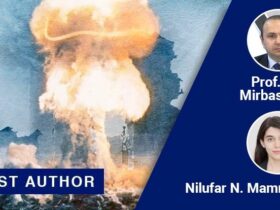
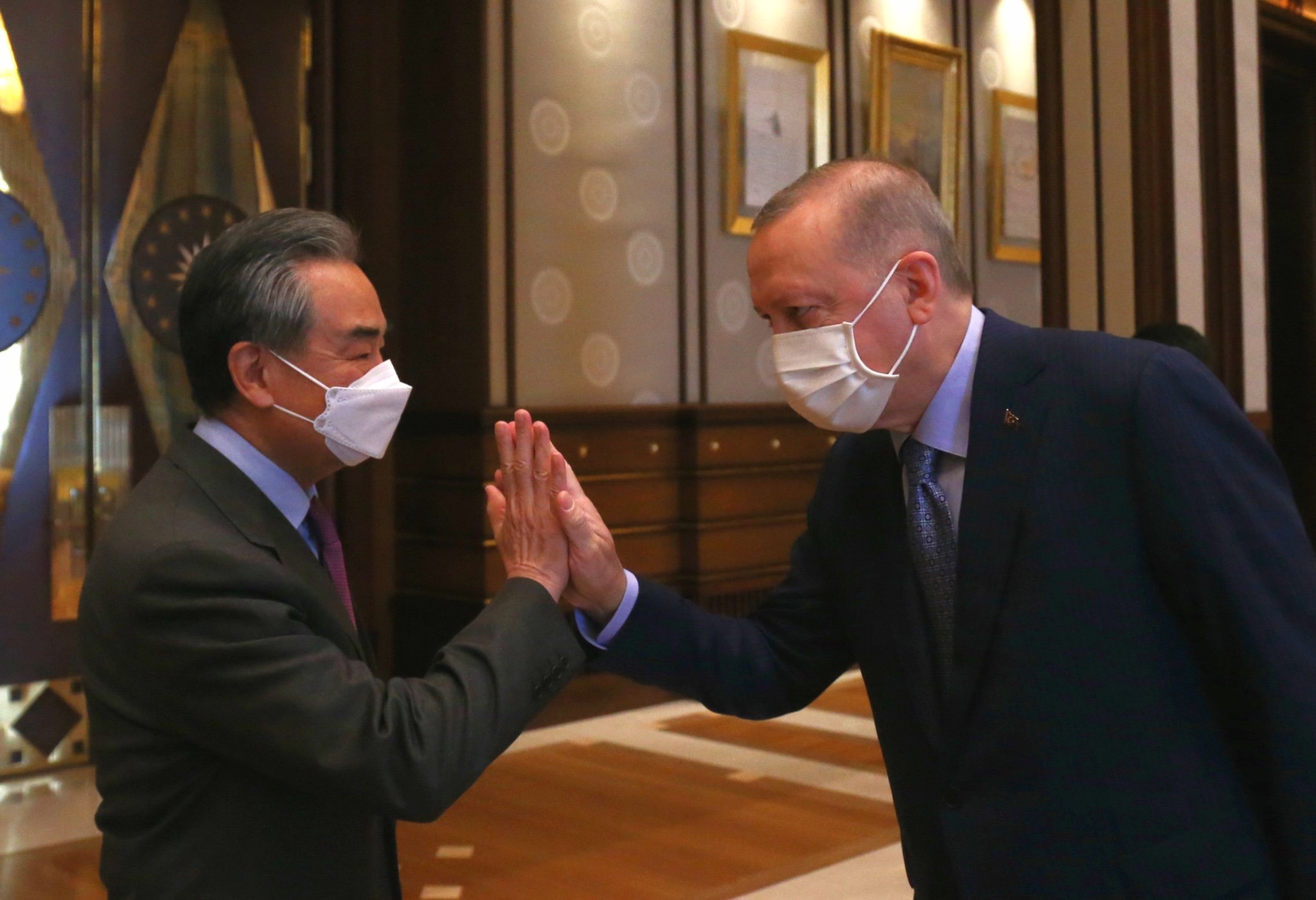



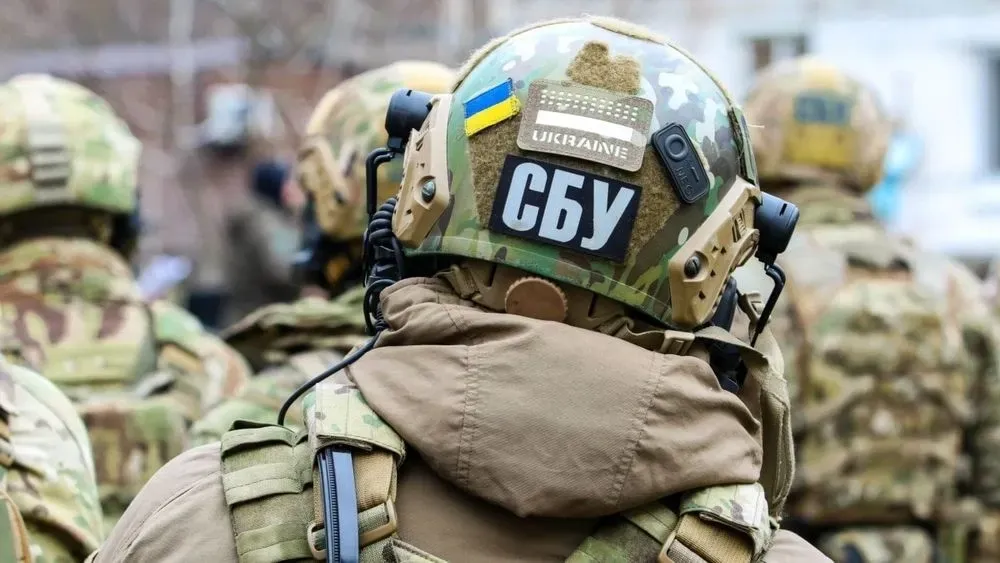
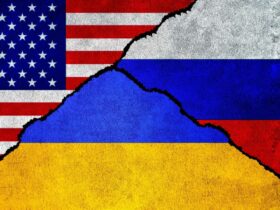







Leave a Reply